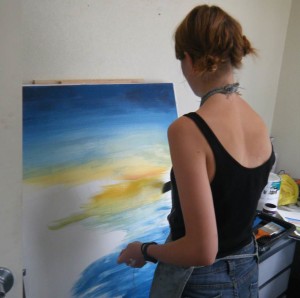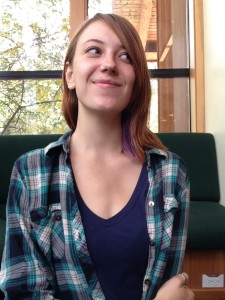Visualizing the Future
Preparing for climate change in the Tijuana River Valley
 Climate change poses a new challenge as we work to conserve coastal landscapes, habitats, and communities. To address this new challenge, the Climate Understanding and Resilience in the River Valley (CURRV) project assessed the potential local effects of climate change associated with sea level rise and flooding from the Tijuana River. This exhibit contains murals that illustrate four different possible futures, or scenarios, that scientists developed through CURRV.
Climate change poses a new challenge as we work to conserve coastal landscapes, habitats, and communities. To address this new challenge, the Climate Understanding and Resilience in the River Valley (CURRV) project assessed the potential local effects of climate change associated with sea level rise and flooding from the Tijuana River. This exhibit contains murals that illustrate four different possible futures, or scenarios, that scientists developed through CURRV.
Click here for a preview!
Art as Science – Science as Art
Our Artist-In-Residence, Audrey Carver, brought the science to life through her painting. Each of the four scenes highlights the habitats and wildlife that would be characteristic of each scenario. The paintings are interpretations of the science behind the scenarios, providing a window into the future.
Understanding Scenarios
Scenarios are not predictions. Each scenario is an alternative representation of how the future may unfold. Considering the past, present and future, three overarching questions guided the formation of each scenario:
- Past: What was the Tijuana River Valley like historically?
- Present: What characterizes the River Valley today?
- Future: How might changes in our climate shape the River Valley in the future?
See the exhibit announcement here!
Meet the Artist – Audrey Carver
Art is how I interpret the world around me. When I was two years old, I loved to color. Pieces of paper, the walls, the floor and even my feet were all potential masterpieces. By five, I was painting and drawing everything I experienced, from wildlife to kids on the playground. My home in the small mountain town of Idyllwild, California has been a constant source of inspiration; a beautiful, strange community where it is more acceptable to be a barefoot artist than a lawyer or doctor. Now, at 17, I am lucky to be attending Idyllwild Arts Academy. I hope that, through my paintings, I can share the beauty and drama of the natural world, and communicate the importance of respecting our environment to create a sustainable future.
In addition to Audrey, thank you to everyone at TRNERR who made this exhibit possible, including:
- Marya Ahmad
- Dani Boudreau
- Jeff Crooks
- Julio Lorda
- Anne Marie Tipton
- Enrique Mendibles
- Lorena Warner- Lara
Special thanks to Amber Pairis and the Climate Science Alliance – South Coast for helping to make this exhibit possible through their Artists in Residence Program. Learn more: climatesciencealliance.org
Funding provided by grants from the Coastal and Ocean Climate Applications Program of the National Oceanic and Atmospheric Administration (NOAA) Climate Program Office, and the National Estuarine Research Reserve System (NERRS) Science Collaborative.

